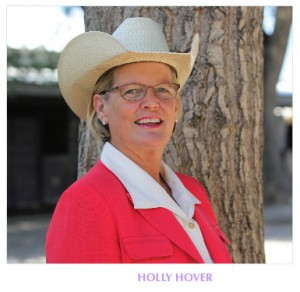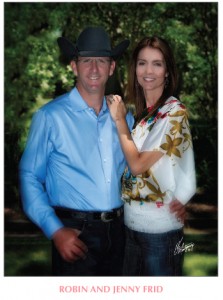Making the Switch – Changing Trainers
Click here to read the full article in our digital edition.

By Lindsay Whelchel
Switching to a new trainer, for whatever reason, is a move that takes careful thought and consideration. Some of the industry’s top trainers give their input on best practices to keep in mind when it comes to making a major transition.For any competitive equestrian, having the right trainer is just as important as having the right horse. But in the journey from the practice arena to first place, there may come time for a change.
AQHA judge and trainer Holly Hover grew up in the horse industry and emphasizes that clients should be open with an existing trainer and a potential new one.
“I think it’s a pretty well-established industry standard, that in those cases, if a person were to telephone me and discuss my program, I would first ask them what their goals were,” she says. “I would also ask them if they were in a program. More likely than not, you would know this person and know they were coming from another barn. I would say to that person, ‘have you discussed this with your trainer?’ They need to talk with their trainer before I would do anything. Then, when they gave me the all clear, I would call the trainer before anything were to transpire.”
Hover is clear that the process of making a switch is a delicate one. “These situations can go anywhere from smoothly to extremely volatile,” she says. “I think my safest words of advice would be honesty and direct communication, person-to-person, not via text or via email. It’s really just common decency.”
If a rider is not satisfied with a current trainer, it’s likely because he or she feels discontent because certain expectations haven’t been met, Hover explains. This is the prime time to talk to your trainer and give him or her an opportunity to rectify the situation. “I’m really direct when someone comes to me, and I tell him or her what I think I can do,” she says. “We sit down and talk about their goals. If I can see I’m not producing, very often I’ll say, ‘here’s what I think. It looks like you might be getting frustrated. Is there something I can do to improve this? Do you feel like you can get help from someone else?’ This doesn’t need to have any kind of personal feeling interjected. It’s a business.”
However, she acknowledges that friendship is a factor. “With a horse trainer, you often cross the line [between] business and friendship, but a really good relationship with any client I’ve ever had has included friendship, so it’s kind of a murky line.” One way to ease the transition and preserve a friendship is to seek the trainer’s opinion on your next move. “Be candid and say, ‘I’m just looking for something different. You’ve been wonderful. I’m thinking about moving on. Can you help me with this? Do you have input?’”
 AQHA trainer Robin Frid, of Robin Frid Show Horses, agrees with the practice of first giving the trainer an opportunity to correct something you’re not happy with before you leave.
AQHA trainer Robin Frid, of Robin Frid Show Horses, agrees with the practice of first giving the trainer an opportunity to correct something you’re not happy with before you leave.
“When you’re dealing with a trainer, you’ve got to realize, as the professional, we cannot read our client’s mind,” he says. “If you’re looking at moving because there’s something you don’t care for or you’re not getting the service you feel you should, then have a discussion with them first and present them with the option to change things. Then, if you really do look into moving, I honestly think you need to talk to your [current trainer].” He adds that it’s important to line up another trainer so you don’t end up in a bind with nowhere to take your horse, but that a trainer should be flexible and give a client who is leaving enough time to make arrangements.
Like Hover, Frid also advises you to seek the current trainer’s input on where to move your horse. “You don’t necessarily have to take their suggestions, but I think, by asking as the client, it’s a level of professionalism that should be appreciated,” he says. “You’ve obviously sought their guidance in the first place for some reason. Why wouldn’t you at least accept their guidance and knowledge a little bit now?”
Discussing goals with your new trainer is important, but Frid explains there is no distinct timeline for settling in or achieving success. “I will not say, ‘I can have your horse doing this [event], this fast. I discuss that normally it might take me [a certain] amount of time before we see some results. At the end of the day, we’re dealing with a living, breathing animal, and it could take a long time.” Instead, Frid discusses with the client what his or her goals are and determines if he believes those are attainable. “Most of the time, we can accelerate things a little bit quicker than any type of a guess I would give someone. As long as they are learning, that’s all we need.”
For a rider who decides not to move to a new barn, there is an adjustment period that takes time. “There is no hierarchy in the barn whatsoever,” Frid says. “If a person has five horses versus a person who has one, we work very hard to keep everything as balanced as possible.” He adds that his clients currently mesh well, but seniority does come into play if there’s a problem with clients getting along. “If [a new person] comes into the barn, and, all of a sudden, people don’t get along or are disruptive, the person who came into the barn may be the one who is asked to leave.”
When you’re new to a barn, there is also the task of learning the daily routine. “We do try to give them a heads up on that, but it’s very much a learn-as-you’re-going thing,” Frid says. “People will fall into the routine quickly, as long as you give them guidelines. You’re changing somebody’s habit, so you’ve got to understand that it can take a little bit of time.”
Like Hover, for Frid, personal feelings do come into play and add to the complexity of the situation. “The hard thing for trainers is that we get very attached to the animals,” Frid says. “Also, especially when you’re working with youth, we get very attached to the kids. I think, to do a great job, you need to have that attachment. But, when it’s over, you also have to realize this is a business. That’s their decision to make, and you would hope that you could still maintain a nice relationship with them.”










